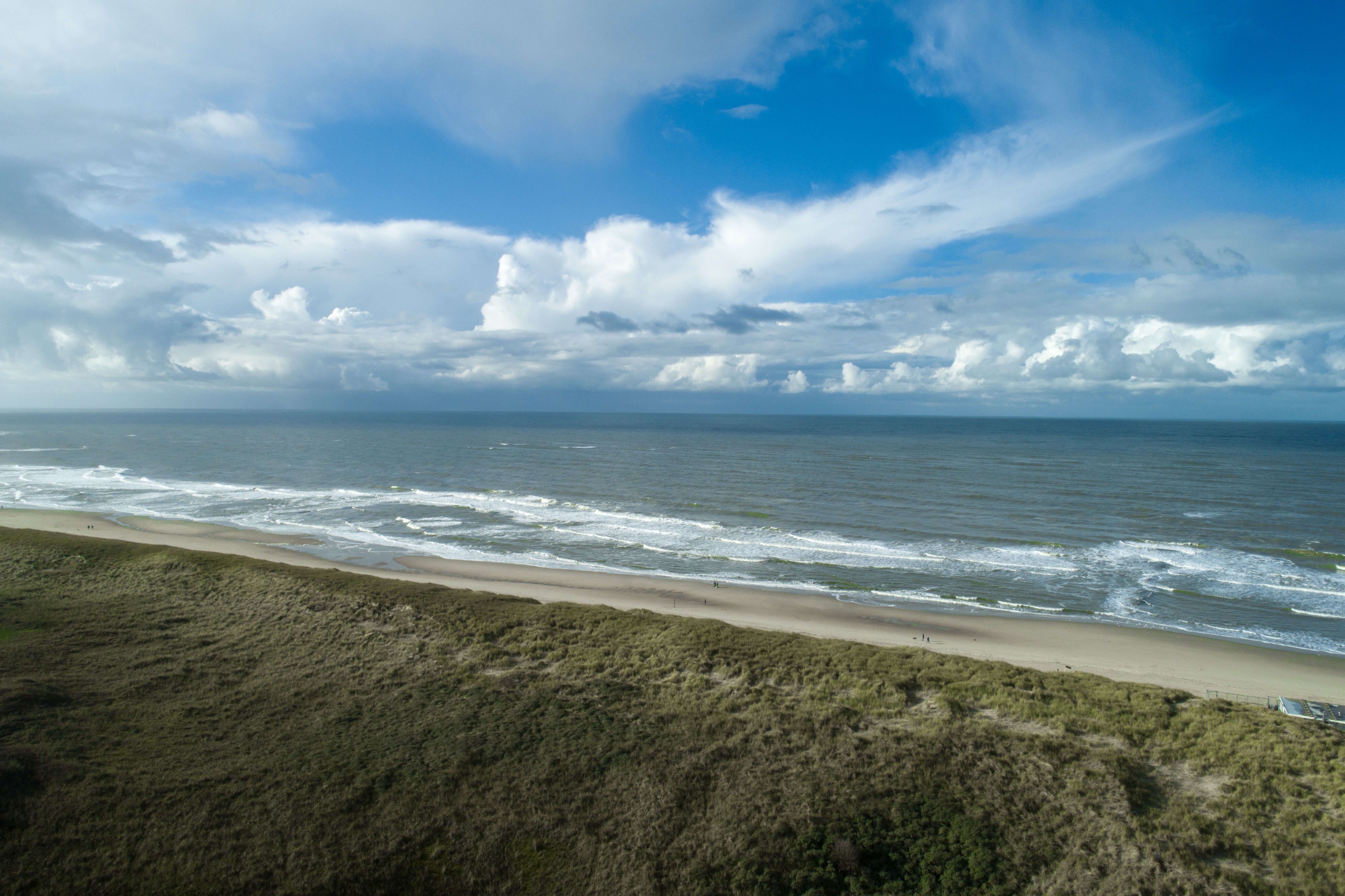By the end of October, the chance of storms increases again. Wind speeds of force 9 or higher are not uncommon. For those who love the thrill of braving the elements, Texel offers some fantastic spots to enjoy a real storm.
While people often talk about autumn storms, the strongest storms on Texel have historically occurred in January. In 1953, the island was hit by the infamous North Sea flood. A powerful northwesterly storm combined with spring tide broke the dike of the De Eendracht polder, flooding the area. Six volunteers lost their lives trying to protect the land from the rising waters. Other severe storms hit in 1976 and 1990. Fortunately, most storms nowadays result only in material damage. Strong winds attract both locals and visitors to the beach – to watch the whitecaps on the waves (called “Skuumkoppe,” the namesake of a local beer) and feel the force of the wind. Sometimes, the sea reaches the dunes and erodes parts of them. At one point, the dunes near Den Hoorn looked like the White Cliffs of Dover, with vertical walls formed by erosion. The nature reserve De Slufter, which has an open connection to the sea, often fills with water during westerly storms – a striking view from the nearby viewpoint.
Flooded harbour
Of all the island’s villages, Oudeschild tends to be most affected by storms. After a heavy storm, the old harbour often floods, and buildings can only be reached by boat. A storm is officially defined as having an average wind speed of force 9 over an hour. Force 10 means a severe storm, force 11 very severe, and force 12 is a hurricane. Another dramatic place to witness the power of a storm is around the lighthouse on the northern tip of Texel. Here, the wind howls across the vast sand flats, and you may feel like you're being sandblasted.
Shipwrecks
Throughout the centuries, storms have caused many shipwrecks and strandings. These days, such incidents are rare thanks to modern navigation, the coastguard, and the relocation of shipping lanes. The most recent notable stranding was the Hunte in December 2001, near De Koog. It sat on the beach for a long time and became a tourist attraction, complete with snack stands. You can hear stories about shipwrecks and view artifacts salvaged by beachcombers at the Shipwreck and Beachcombers Museum Flora.
Staying near the beach
If you love experiencing the seasons up close, Texel is perfect in autumn and winter! Enjoy long beach walks with the wind in your hair or explore local culture at one of the island’s six museums. Vakantiehuizen Texel, located near the woods and close to the beach, makes an ideal base.




